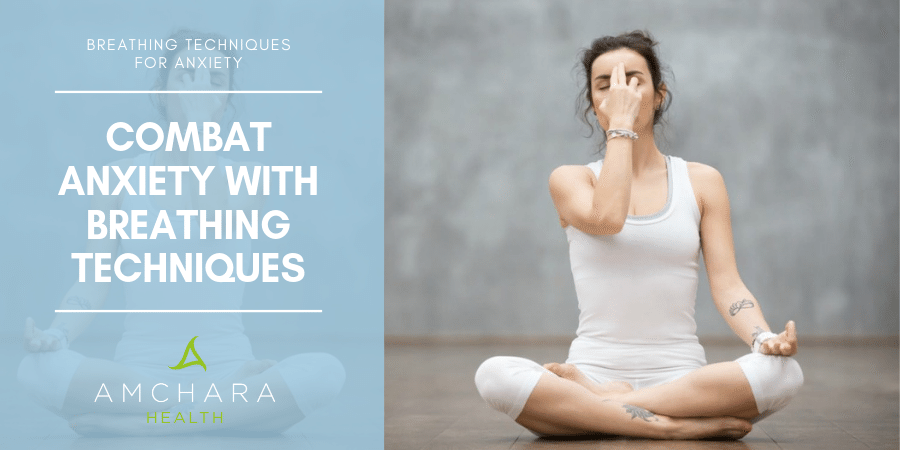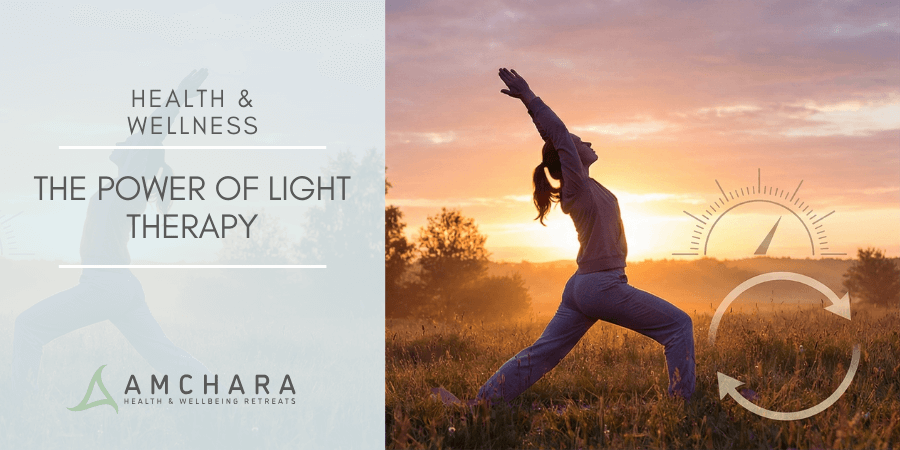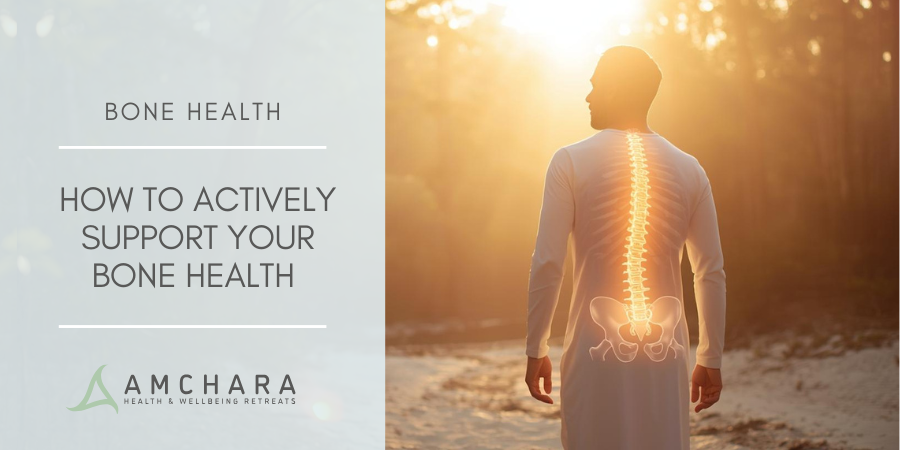Topics Covered in this article:
Anxiety affects more than 8 million people in the UK and is becoming increasingly common (1).
For some people there may be clear triggers for anxiety, such as a phobia, but for others even day to day activities may contribute to an overall feeling of anxiety.
Anxiety levels may vary between individuals – some people may feel it as a low grade uneasy feeling whilst other experience debilitating panic attacks.
Dealing with anxiety may be difficult and getting to the root cause may take some time.
Having specific techniques at hand to help you through anxious feelings can also help to reduce symptoms.
In this article we show you three breathing techniques that can be used at any time to help combat anxiety.
>What is Anxiety?
Anxiety to a degree is normal – we all feel anxious prior to an exam or a first date for example.
Anxiety poses more of a problem when feelings of worry, fear or tension take over and impact how you live your life.
Anxiety may involve feelings, thoughts and physical sensations which can vary from mild to severe.
Typical symptoms experienced include:
- Increased heart rate
- Palpitations
- Sweating
- Tightness across the chest
- Feelings of not being able to breathe properly
- Light-headedness
- Increased irritability
- Restlessness, inability to relax
- Loss of concentration
- Uncontrollable feelings of worry
- Low mood
- Insomnia
- Digestive disturbances such as diarrhoea or nausea
- Uneasy feeling in the stomach area
If you find that these feelings are overwhelming, out of control, out of proportion to the situation or last for a long time, then you may benefit from anti-anxiety techniques such as breathing exercises.
Breathing Patterns
During times of stress or when feeling anxious, your breathing patterns change.
Normally the brain will set breathing rate and pattern according to the levels of carbon dioxide in the blood.
Breathing should involve the diaphragm – the large muscle that sits between the abdomen and the chest – and on inhalation the abdomen should move out slightly.
The chest should remain relatively still.
With anxiety there is a tendency to breathe in a more shallow pattern, using the chest rather than the diaphragm.
This kind of breathing pattern causes too much carbon dioxide to be exhaled and causes an imbalance of blood gases.
This type of over breathing often exacerbates anxiety symptoms.
Falling carbon dioxide levels also reduce oxygen release to cells (2).
If hyperventilation persists then blood pH can change causing respiratory alkalosis; this then forces the kidney to compensate by releasing bicarbonate – although this may take several hours.
A common suggestion to alleviate hyperventilation is to breathe into a paper bag – thus inhaling carbon dioxide and restoring balance.
Becoming More Aware of Breathing
The first step in using breathing techniques is to become more mindful of breathing itself.
Although breathing is an unconscious activity, becoming more aware of how you breathe, and the muscles used, can help you to implement a variety of breathing techniques.
Sitting comfortably, notice how the chest and abdomen move when you breathe in and out.
Place one hand on your chest and one on your abdomen, your chest should not be moving much and your shoulders should remain still.
The abdomen should expand gently as you inhale.
You may find that keeping your eyes closed helps you to observe sensations more.
Feel the air passing in through the nose and moving down the respiratory tract.
Notice whether the air is warm or cool – can you feel it at the back of your throat?
Practicing mindful breathing once or twice a day can be a good start and doesn’t have to take long, you can fit it in on even the busiest of days and it can be done any time – whilst on the bus, taking a break at work or waiting for the kettle to boil.
Breathing to Enhance the Parasympathetic Nervous System
Breathing is influenced by part of the nervous system called the autonomic nervous system (ANS).
This is made up of two parts – the sympathetic nervous system (SNS) and the parasympathetic nervous system (PNS).
In times of stress or anxiety the ‘fight or flight’ response is activated – this is part of the SNS.
It serves to prepare the body for a threat or danger and heart rate and breathing are increased – preparing the body for action.
Hormones such as adrenaline are released, and this can contribute to anxiety symptoms.
The parasympathetic nervous system is the more calming side of the ANS – when it is more dominant than the SNS, heart rate and blood pressure go down, muscles are relaxed and there is a reduction in symptoms of stress and anxiety.
Conscious breathing patterns can influence the ANS and the PNS is stimulated on exhalation.
In the midst of heightened anxiety or a panic attack the short, shallow breaths can make the situation worse.
It is often recommended to ‘take a few deep breaths’ in times of high anxiety and whilst this may be useful if it is only a few breaths, continuing a deep breathing pattern may increase carbon dioxide exhalation similar to hyperventilation.
It is better to have more of a focus on gentle inhalation and longer exhalation to stimulate the PNS.
Breathing Techniques
When starting something new it is a good idea to gradually get used to techniques and start slowly.
The old saying ‘practice makes perfect’ rings true here.
The more you do breathing exercises, the better you will get at it and more benefits will follow.
As a start, becoming more aware of breathing and the physical action of breathing is highly recommended.
Getting used to breathing patterns to support the PNS when you are not in a state of anxiety helps you to focus more and makes it easier to tap into the technique when you do experience a period of anxiety.
Try practicing some of the techniques once or twice a day at calm times.
As you become more used to the different breathing techniques, it can be beneficial to use positive visualisation during breathing exercises in a relaxed state.
This helps to ‘anchor’ positive feelings; the more you do this the calmer you will feel when breathing during times of anxiety.
This is because the brain forms an association with a certain activity (the breathing technique) and a positive emotion.
It may take several weeks of practice for this to fully sink in so perseverance is required.
A positive visualisation could be self-guided – remembering a time when you were at your calmest, or happiest, and using your senses to recall it:
What emotions did you feel?
What were your surroundings like?
Was there a particular scent associated with that experience?
Were you holding something?
What did it feel like?
Try to feel the situation as vividly as possible, as if you were there again.
If you have trouble using past positive memories, you could use guided meditation or visualisation recordings whilst focusing on your breathing technique.
Many of these will take you through a peaceful scenario designed to be calming and relaxing.
Let’s take a look at some methods of breathing to reduce anxiety.
-
Easy Breathing
This is a great technique for beginners. It is an extension of daily mindful breathing that you can do just about anywhere.
Start by incorporating easy breathing once or twice a day.
Once you feel more comfortable with this technique move on to the next level.
- Sit or lie flat in a comfortable position.
- Put one hand on your belly just below your ribs and the other hand on your chest.
- Take a slow breath in through your nose, and let your belly push your hand out. Your chest should not move.
- Breathe out slowly through pursed lips as if you were whistling. Feel the hand on your belly go in, and use it to push all the air out. Exhale fully.
- Do this breathing 3 to 10 times. Take your time with each breath.
- Notice how you feel at the end of the breathing exercise.
-
4-7-8 Breathing
This is a more intermediate type of breathing technique and really focuses on the exhalation – keeping it longer than the inhalation.
There is a short pause after inhaling, this can be tricky at times. If you find it difficult simply move from a short inhale to the longer exhale without pausing.
- Sit in a comfortable position and put one hand on your belly and the other on your chest as in the mindful breathing exercise. Exhale fully.
- Take a gentle, slow breath from your belly, and silently count to 4 as you breathe in.
- Hold your breath to a silently count from 1 to 7.
- Breathe out completely as you silently count from 1 to 8. Try to get all the air out of your lungs by the time you count to 8.
- Repeat 3 to 7 times or until you feel calm.
- Notice how you feel at the end of the breathing exercise.
-
Alternate Nostril Breathing – Nadi Shodhana
In yoga there are several breathing techniques, called pranayama, which involve different types of breathing patterns thought to stimulate different functions within the body.
Many types of pranayama have been shown to increase PNS activation and have a calming effect (3,4,5).
In alternate nostril breathing it is believed that the left nostril links to the PNS and the right nostril links to the SNS.
Alternate nostril breathing should start and end with the left nostril.
This is a more advanced type of breathing exercise and should be taken slowly.
Begin with up to 5 minutes a day until you feel more comfortable and then slowly increase.
Alternate nostril breathing can be a good way to begin and end your day as well as during feelings of anxiety.
- Sit in a comfortable seated position, if you are used to yoga positions then sitting cross legged, in lotus pose or virasana is fine.
- Start by taking a few deep gentle breaths though both nostrils, become aware of the belly and lungs filling with air. Focus on this gentle breathing.
- With your right hand, bend over the first two fingers so they touch your palm. The thumb and the ring finger will be used to close off alternate nostrils. Gently relax the other hand and allow the palm to face upwards.
- After an exhalation, gently close off your right nostril with your thumb. Inhale slowly and deeply through your left nostril to the count of 5. Using your ring finger gently close off your left nostril and pause to the count of 5
- Release your thumb from the right nostril and exhale slowly through the right nostril to the count of 5. Pause after the exhale, again to the count of 5.
- Keeping your ring finger on the left nostril, inhale through the right nostril to the count of 5. Close off the right nostril with your thumb and pause to the count of 5.
- Release the ring finger from the left nostril and exhale slowly through the left nostril to the count of 5.
- This forms one cycle.
- Continue with this rhythmical breathing for 5-10 cycles or for 5 minutes or more. Always remember to end your alternate nostril breathing by exhaling through your left nostril.
- Once you have finished your set time of alternate nostril breathing, take a little time to gently breath through both nostrils. This can be a good time to reflect on how you feel.
Once you are comfortably familiar with one or more breathing exercises, you will find it easier and easier to incorporate them when you need them most.
As you support your parasympathetic nervous system more often, allowing it to dominate, you may find that anxiety levels decrease.
If this does happen, continue with daily breathing exercises to support a calm nervous system for the long term.
If you would like more information or help with anxiety or a stress an experienced practitioner can use a personalised approach to assess predisposing factors, nutrient and hormone balance and devise a specific programme to deal with the root cause.
We’re dedicated to providing you with both insightful information and evidence-based content, all orientated towards the Personalised Health approach.
Did you find this article useful?
Do you use breathing techniques for anxiety?
Share your experiences with others and help them to tackle anxiety symptoms.
Leave your comments below.
READ THIS NEXT:




